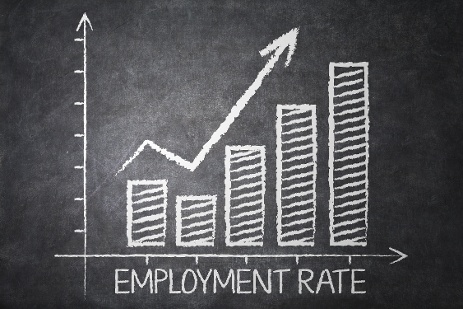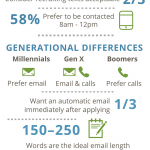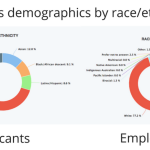How to Transform Your Company’s Talent IQ: Driving Talent Intelligence with Pre-Hire Assessments
April 23, 2016

Businesses searching for candidates with desirable skillsets are stepping into today’s talent pool…only to discover the waters aren’t as deep as they used to be.
Many organizations are now contending with an increase in the volume of underqualified applicants, making the search for talent more difficult.
But what if businesses could plan for changes in the economy or the labor market before they happened?
In Part 2 of our blog series, How to Transform Your Company’s Talent IQ, we examined how the integration of analytics provides insights that hold the potential to change the way companies use talent-driven intelligence to make decisions.
Today, we’ll discuss how your business can use the power of data analytics to discover the effects certain conditions in the market have on performance, as well as how to navigate the ambiguities of a changing labor market and coordinate impactful, forward-facing hiring strategies that use data from both the past and present.
Data Analytics and the Hiring Process
To get better results in the talent acquisition process, businesses need better intelligence. Historically, in the talent selection process intelligence has been gathered through three types of analytics – descriptive analytics, diagnostic analytics, and predictive analytics.
Descriptive Analytics: The descriptive portion of data analytics does just that: it describes the characteristics of variables and provides a generalized look at the data. However, it doesn’t describe what might happen because of the data. For example, employers can work in conjunction with workforce scientists to use descriptive analytics to observe how one group of applicants performs compared to other groups. Additionally, you descriptive analytics can be used to compare applicants against the industry standards.
Diagnostic Analytics: Diagnostic analytics uses algorithms to explore why performance is what it is among employees, and is used to answer questions like:
- What characteristics do top performers have in common?
- Which employees are the most successful in integrated roles?
For instance, when assessment data are observed for a retail business experiencing problems with shrinking operations, the data might reveal that the business trends toward hiring individuals who lack integrity. By looking at assessment and performance data collectively, leadership can begin to understand why certain trends are taking place among the business’s workforce.
Predictive Analytics: These data predict what will happen if a business continues to operate in the same way. For example, organizations use predictive analytics can be used to determine how a job profile should be tweaked to better identify candidates who fit well within the company’s culture. With these data, profiles can be changed to identify candidates with qualities that drive better performance, better sales, and lower turnover. Businesses can then model out that impact of these actions using existing employees. Predictive analytics can then inform businesses how changes in the pre-hire assessment would benefit their bottom line.
Strategizing for Market Changes with Talent Assessments
The fourth component of talent analytics – prescriptive analytics – is the contemporary, progressive piece of the puzzle that holds the most promise for business, yet is a component few pre-hire assessment companies choose to explore.
Descriptive, diagnostic, and predictive analytics all provide valuable data from the past, allowing businesses to identify helpful (and harmful) patterns within their own organizations, but what isn’t often utilized by talent assessment vendors are the data outside the organization to shape the hiring decisions made within it.
When it comes to the assessment process, the overwhelming majority of assessment companies stop short of predictive analytics. Consequently, organizations miss out on information that could provide them with powerful insights to drive strategies for talent acquisition and talent retention.

Business, after all, isn’t done in a vacuum. Why would making decisions about the hiring process be different?
Prescriptive analytics gives businesses the power to synthesize data from both inside and outside the business itself, and to make predictions and suggests decision options to take advantage of those predictions.
Like a business itself, employees and candidates live dynamic lives in an ever-shifting world. A variety of changes in the market can impact a company’s ability to hire top talent, including:
- Changes in the cost of gas
- Changes in the cost of living index
- Changes in the minimum wage
Truly savvy pre-hire assessment companies recognize this, and will use prescriptive analytics to help account for shifts in the market and ultimately, create better hiring strategies.
 For example, when the unemployment rate drops, the talent pool will inevitably shrink. With the help of the data prescriptive analytics provide, businesses can identify trends in the market and develop strategies to work creatively on recruiting, pay, and incentives strategy allowing them to get a leg on the competition before the competition realizes what is happening.
For example, when the unemployment rate drops, the talent pool will inevitably shrink. With the help of the data prescriptive analytics provide, businesses can identify trends in the market and develop strategies to work creatively on recruiting, pay, and incentives strategy allowing them to get a leg on the competition before the competition realizes what is happening.
With prescriptive analytics, businesses experience a change in perspective that is not solely reliant on data from the past, but instead looks to the future to glean insights that allow you can strategize your hiring efforts.
Once prescriptive analytics is added to the mix, the world of possibilities for businesses opens up, and analysis transforms from “Here’s what happened over the past twelve months,” to “Over the next 180 days, these qualities are going to emerge as you enact quality customer service.”
By taking into account other data – economic data, labor market data, and other indices across industries – businesses can forecast the impact a changing market will ultimately have, and plan for it in advance.
Business & Finance Articles on Business 2 Community
(36)













